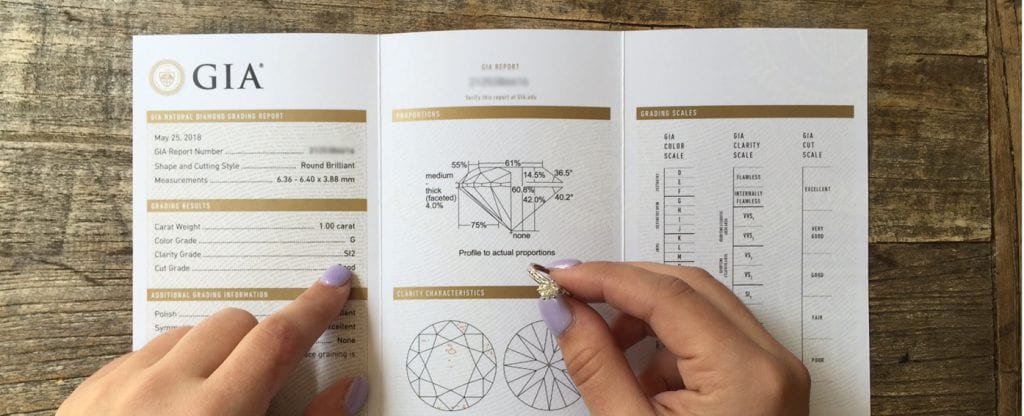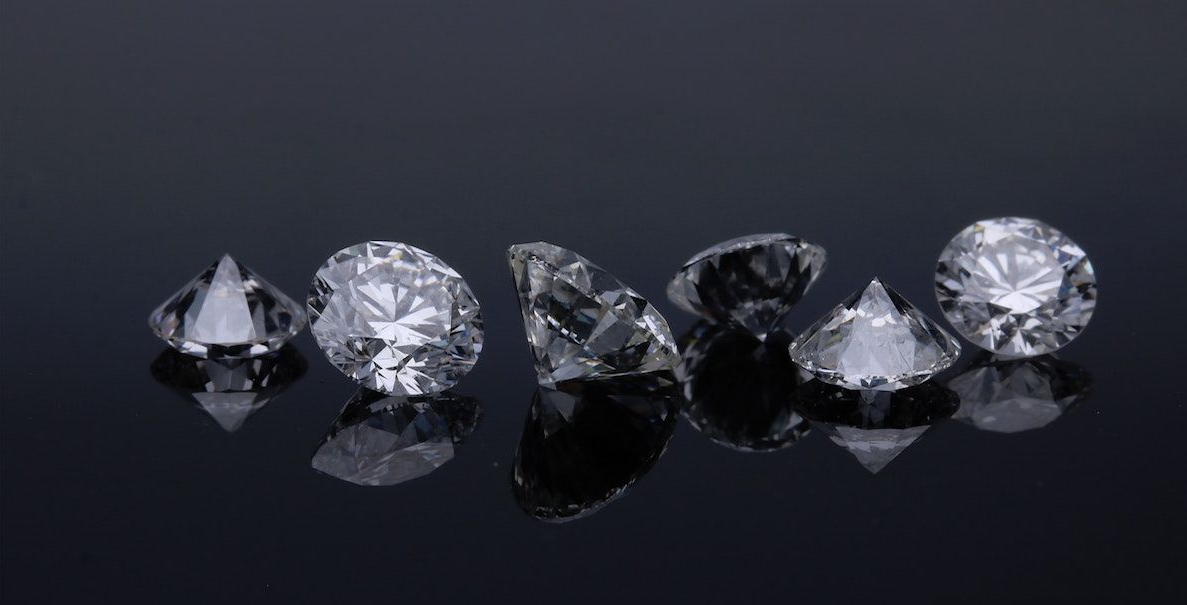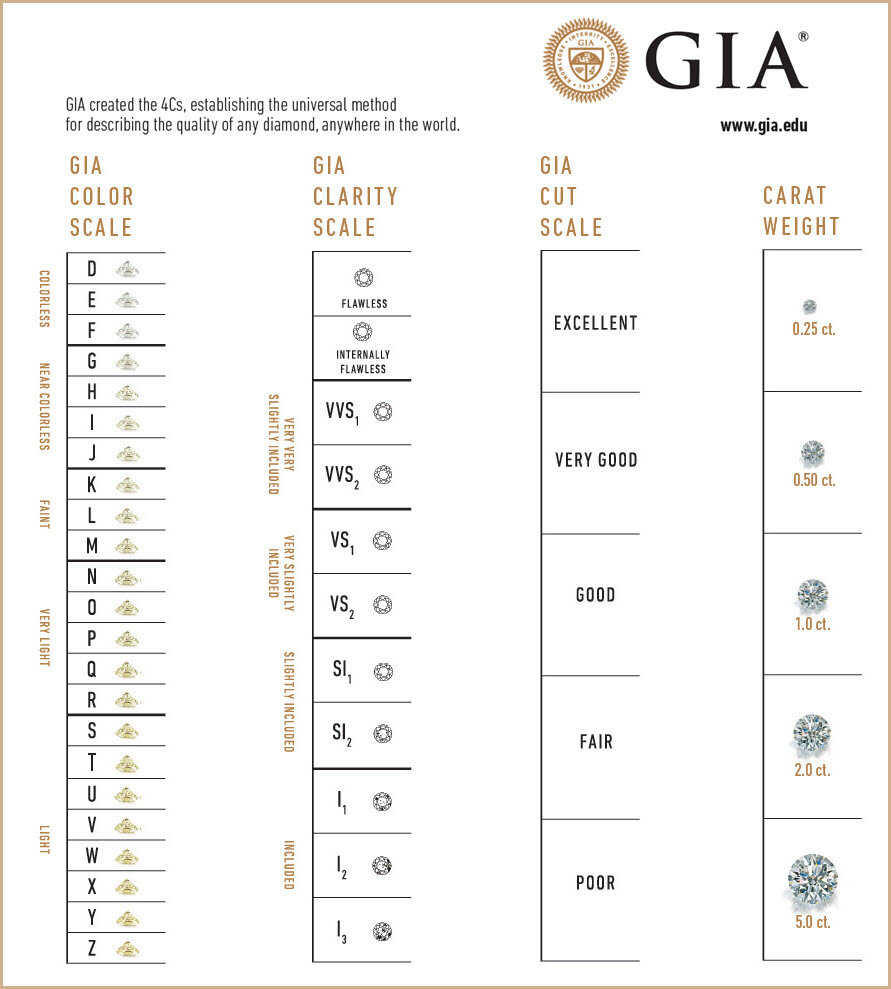R.L. AUSTEN GUIDE TO DIAMONDS
Diamonds are the hardest material found in nature. It is also the clearest, refracting the light in a way that is utterly unique and brilliant. Diamonds come in a range of colours, shapes and sizes, with no two being alike. Jewellers classify diamonds on four criteria; known as the 4 C’s, they stand for cut, colour, clarity and carat. Some jewellers think there are 6 C’s, the other two standing for certificate and conflict-free or ethical diamonds.
Carat
The carat weight of a diamond is the actual weight measurement. The carat is an ancient unit of weight used to measure gemstones, the name comes from the Carob Tree, whose seeds are so uniform that they were used as an early standard of weight. Todays metric carat, abbreviated to ct, is fixed at 0.20 grams and is stated in two decimal places. Generally speaking the larger the diamond, the greater the scarcity, the more valuable the diamond.
Colour
Diamonds can range in colour from colourless to yellow or brown. The colour of a diamond is measured on an alphabet scale, starting at D for completely colourless, to Z for light yellow. The closer to colourless a diamond, the higher the level of brilliance, and the higher the price a stone can fetch. Many of these color distinctions are so subtle as to be invisible to the untrained eye, and are measured against a set of control stones. Diamonds can also occur in fancy colours, with vivid pink, blue and green being the most valuable.
Clarity
Most diamonds have some sort of imperfection, making each diamond unique, also called natures birthmark. Imperfections can occur as either internal (inclusions) or external (blemishes). While most imperfections are invisible to the naked eye, some can be viewed through a 10x magnification jewellers loupe. When the imperfections are not visible, the value of a gemstone is dramatically increased.
Cut
The cut of a diamond refers to the facets, and their proportions on the surface of a diamond. This includes how well the diamond is cut and if the diamonds facets are proportional. In a well proportioned stone, lights enters and reflects in the stone to create sparkle or brilliance.
The cut of a diamond is different to the shape of a stone. The round brilliant cut being the most popular, followed by other fancy shapes such as pear, oval, princess or emerald cut.
Certificate
A diamond having a certificate means that the stone has been through a gemological laboratory and has been graded by a professional diamond grader. They will note the carat, colour, clarity and cut, and any other characteristics on a certificate. Sometimes the diamond is laser inscribed with a certificate number, which will then match the diamond report. Some examples of diamond certificates are GIA, the Gemological Institute of America, or the IGI, International Gemological Institute.

What Is A GIA Report?
The grading reports issued by GIA, are recognized as the most respected and impartial reporting in the diamond industry. With objectivity and expertise as its hallmarks, GIA ensures the integrity and accuracy of every grading report it issues. A report from GIA is an expert, un-biased statement of a diamond’s identity and quality characteristics.
Conflict-free or Ethical Diamonds
The Kimberley Process is a multilateral trade regime established in 2003 with the goal of preventing the flow of conflict diamonds. The core of this regime is the Kimberley Process Certification Scheme (KPCS) under which States implement safeguards on shipments of rough diamonds and certify them as “conflict free”. The Kimberley Process started when Southern African diamond-producing states met in Kimberley, South Africa, in May 2000, to discuss ways to stop the trade in ‘conflict diamonds’ and ensure that diamond purchases were not financing violence by rebel movements and their allies seeking to undermine legitimate governments.
R.L. Austen is proud to offer a range of fair-trade and ethical recycled diamond rings, we also offer lab-grown diamonds. A lab grown diamond is created in a laboratory setting that emulates the natural process of a diamond’s growth. While it is visually, chemically and physically identical to a natural diamond, lab created diamonds can cost up to 60% less and are considered a more sustainable option than mined diamonds.
We offer a range of second hand or pre-owned diamond rings. For the ethically concerned consumer it is really the greenest choice, as the diamonds, gemstones and precious metals have already been mined therefore will not add to the damage caused to the enviroment.
Are lab made diamonds real diamonds?
Yes, lab diamonds are 100% real diamonds, and are optically, chemically and physically identical to natural, mined diamonds. The demand for lab made diamonds has soared in recent years, as engineering methods and technology have been perfected to produce diamonds that are, by all accounts, beautiful, economical, real diamonds.


